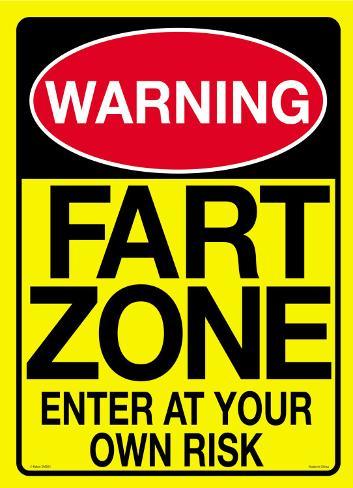…Let’s Share Life, Ideas, Stories….And Anything Else That Comes To Mind….And Grow Together! Isaiah 35
Wednesday, December 17, 2014
Easy On The Sugar...Pass The Salt,Please...
I am one of those people that sometimes check food labels while grocery shopping. What I usually look out for are : sodium, caloric, and fat contents, I seldom check for sugar content, but I do look out for and try to avoid, as much as I can, products with high fructose corn syrup.
Sodium have been labelled the "bad guy", for as long as I can remember, with regards to being one of the factors that can cause cardiovascular events.
However studies have shown that it is actually SUGAR that is the culprit!
The authors ( A pharmacist and a medical Doctor) of an article in Open Heart conclude that foods and beverages with high sugar content may make a significant contribution to cardio-vascular risk/diseases. They also suggest that processed foods ( which tend to have high sugar content from preservatives and additives) be replaced by natural whole foods like fruits, vegetables, grains, nuts.
Below is an except from Medscape. com:
"It is a little bit frightening that we have been focusing on salt for so long," Richard Krasuski, MD, from the Cleveland Clinic in Ohio, told Medscape Medical News. Dr Krasuski was not affiliated with the research.
A reduction in the consumption of added sugars and, in particular, processed foods may translate into decreased rates of hypertension as well as decreased cardio-metabolic disease. In particular, a new review article suggests that sugar, not salt, appears to contribute to the majority of the hypertension risk associated with processed food.
The conclusion that sugar represents a greater danger to the heart than salt, Dr Krasuski said, was an "eye opener." He acknowledged, though, that he should have anticipated it. He and other cardiologists have noticed that the recommendations to increasingly lower salt intake have not resulted in the expected positive cardiovascular outcomes.
Nevertheless, the bottom line of the article's recommendation should be familiar and comfortable to most physicians: Eat less processed food.
Saturday, December 13, 2014
Tips For Feeling Fine On Long Flights.
This time of the year till the first week of January is when people tend to travel the most, especially by air, to spend time with friends and family during the holidays as businesses and schools are winding down for the year.
So, if you are traveling by air , especially more than 4-6 hours long, here are some tips to make your travel more tolerable:
- Consume somewhat more liquids than normal to prevent dehydration.
- Take caffeine or alcohol in moderation.
- Do exercises in your seat (see below).
- Walk regularly through the cabin, when possible.
- Consult your doctor prior to your trip if you suffer from chronic disorders or airsickness.
- Have gum or candy ready for take-off and landing to reduce the effect of changes in air pressure.Low humidity in the cabin can exacerbate allergic or asthmatic conditions. Take the necessary precautions, if necessary.
- Take a walk through the cabin.
- Foot circles: Lift your feet off the floor and move your toes in a circle, one foot moving clockwise and the other anti-clockwise. Then change direction. (15 seconds each)
- Foot lifts: Place your heels on the floor and bring your toes up as high as you can. Next, pull your heels up while keeping the balls of your feet on the floor. (30 seconds each)
- Knee lifts: Keep your knee bent and raise your leg while tensing your thigh muscle. (10-15 times each leg)
- Shoulder rolls: Raise your shoulders, then roll them forward, downward and back in a smooth movement.
- Arm bends: Start with your elbows on the armrest and hands pointed forward so that your elbow makes a 90-degree angle. Take turns moving your hands toward your chest and back again. (30-second sets)
- Knee to chest: Bend slightly forward. Put your hands together around your knee and pull it toward your chest. Hold for 15 seconds, then lower. (10 times each leg)
- Forward bends: Place both feet on the floor and pull your abdomen in. Slowly bend forward and "walk" your fingers along your shinbone to your ankles. Hold for 15 seconds and sit up slowly.
- Upper body stretch: Stretch both arms high over your head. With your right hand, grab your left wrist and pull slowly to the right. Hold for 15 seconds and switch.
- Shoulder stretch: With your right hand, grab your left elbow and pull your outstretched left arm slowly toward your right shoulder. Hold for 15 seconds and switch.
- Neck roll: Relax your shoulders, let your head drop to your right shoulder and roll your head to the front and then to your left side. Hold each position for 5 seconds. (Repeat 5 times.)
Culled From KLM.com
Saturday, December 6, 2014
Fart Facts…Hehehehe
Culled from Vox.com
Whether you try to hide it or not, you fart….everybody does!...An average person farts between 10-20 times a day.
But even though it's a routine activity,there's a lot about farting that you might want to know.
As part of research into the rich community of bacteria that live throughout our body, scientists have learned all sorts of interesting things about the bacteria that produces gas inside our intestines.
Here are 9 important things to know about flatulence.
1. We produce about 500 to 1500 milliliters of gas per day, and expel it in 10 to 20 farts.
According to Purna Kashyap-a gastroenterologist at the Mayo clinic, A huge variety of foods like virtually all beans, most vegetables and anything with whole grains, contain complex carbs that we cannot fully digest. These foods end up in the large intestine, where microbes chew them apart and use them for energy, through the process of fermentation, and gas is produced as a by-product.
2. 99% of the gas we produce does not smell.
Hydrogen, Carbon Dioxide and Methane make up as much as 99% of the gas produced in our large intestines.All these gases are odorless, which why most of the time farts have no smell.
Research has found that the potent stink is largely due to the 1% or so of compounds with sulfur in them, for example onions, beans, cauliflower, brussels sprouts, broccoli and dairy.
3. Soda and Chewing gum makes you fart more.
A significant portion of fart is simply made up of inadvertently swallowed air, mostly nitrogen and oxygen.
Some of the swallowing occurs while we are asleep, but it can be increased by drinking carbonated beverages and by chewing gum.
4. Farting is the result of a healthy, complex ecosystem in our intestines.
It is unfortunate that modern society views flatulence-a byproduct of bacteria living in our intestines, a negative.
The same bacteria that produce gas also generate vitamins and fatty acids that help maintain our colon lining, and may support our immune systems.
5. There’s a simple reason why we don’t mind the smell of our own farts.
Human beings become habituated to all smells over time. That is why we become habituated to the characteristic mix of odors produced by the bacteria in our own body, which of course differs slightly from everyone else’s. As a result our own farts just don’t have the same impact on you- even though they are just as pungent for everyone else.
6. Yep! We can light a fart on fire..
Because flatulence is partly composed of flammable gases like methane and hydrogen, it can be briefly set on fire.
7. ..And Nope! We can not hold a fart until it disappears.
According to the physics of fart: A fart is a bubble of gas and there’s ultimately nowhere for it to go besides out of the anus.
At times, after holding in a fart for awhile, it can seem to disappear. This is because you stop being conscious of it and it leaks out gradually.
8. Beano® cuts down on gas production by starving the gut bacteria.
The over-the-counter product Beano® is found significantly reduce gas production in the hours following a bean-filled meal.
Beano contains an enzyme called alpha-galactoside that cut complex carbohydrates into shorter, simpler carbs that are much easier to digest. As a result , they get broken down in the small intestines, rather than making it all the way down to the large intestine, where bacteria would ferment them, producing gas.
9. Starving fart-producing bacteria is not really a good idea.
The amount of fart we produce is the result of both our diet and gut bacteria-unless we are experiencing problems like painful bloating, excessive amounts of gas due to lactose intolerance-it is not necessary to limit gas production.
However, many people who believe they suffer from excessive gas production actually just have trouble with the flow of gas through their intestines, probably due to constipation.
..So,please fart-along …LOL!
Subscribe to:
Posts (Atom)


